#ivan carvalho icons
Text
Patrick & Iván




like or reblog if you use or save.
#elite icons#elite 6#serie tv#serie icons#patrick blanco#patrick blanco commerford#patrick blanco icons#Manu rios#manu rios icons#ivan Carvalho#ivan Carvalho icons#André lamoglia
125 notes
·
View notes
Text









#patrick blanco icons#manu rios icons#isadora artinan icons#valentina zenere icons#andre lamoglia icons#ivan carvalho icons#elite#elite icons#netflix#icons#icons without psd#twitter stuffs
108 notes
·
View notes
Text




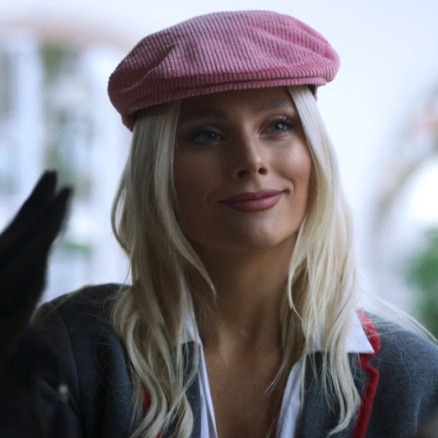



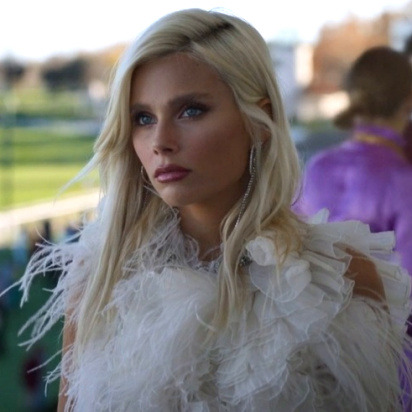
like or reblog if you save. ♡
#icons#icons request#elite#netflix elite#elite cast#elite season 7#elite s7#elite icons#valentina zenere#isadora artinan#andre lamoglia#ivan carvalho#mirela balic#chloe elite#fernando lindez#anitta#netflix#tv show#tv series
62 notes
·
View notes
Text
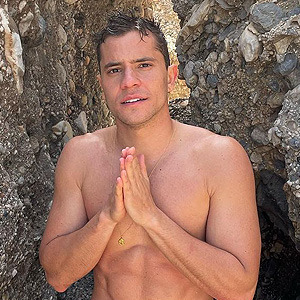


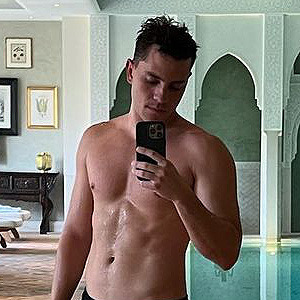





like/reblog if you save
#andre lamoglia#icons andre lamoglia#andre lamoglia icons#elite#icons elite#elite 6#icons elite 6#elite6#ivan carvalho#icons ivan carvalho#elite season 6#netflix#male#models#icons boys#icons meninos#boys#ivan#holesrus#flawlessgentlemen
134 notes
·
View notes
Text









# 𝘇𝗭𝘇 新的 🍇° ꕤᩨᩝ ぷ⋕ . . 𝕟̫𝖾̈𝗐͢ ᖘᩚ𝗼ᩚ̲𝘀𝕥̫. ★ // ( ˘ ³˘)♥︎ ★ ∘៳ 🕸️🐛 l!ke 𖦹r rebl𖦹g #? ᨓ .. . 𓍢📢 ֶָ֪﹪. [ ℭ ]𝗿𝗲𝗱¡𝘁𝚂 𝗆𝕖 :: ✩* .💉 ⋆
#bwbejacksonpsd#celebrities#icons with psd#soft icons#moodboard#pastel moodboard#colorful moodboard#messy layouts#trufflezitas#susumo#elite s6#elite icons#elite#isadora artiñán#isadora artinan#patrick blanco#ivan carvalho#mencia blanco#sara elite#didac elite#ari blanco#icons elite#isadora artinan icons#patrick blanco icons#ivan carvalho icons#mencia blanco icons#ari blanco icons#elite metadinhas#elite matching icons#cybercolors
112 notes
·
View notes
Text



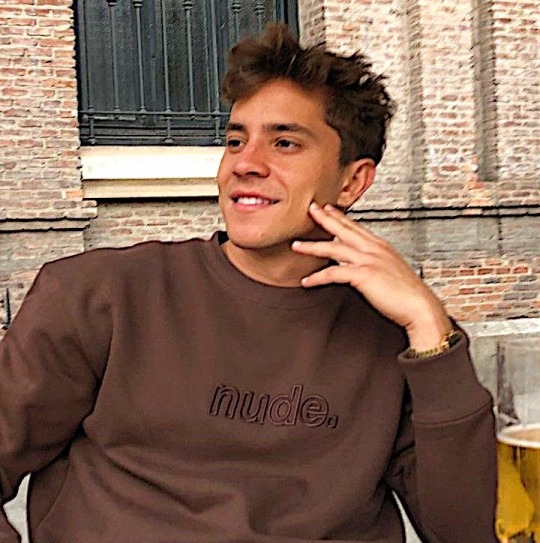





andre lamoglia icons
23 notes
·
View notes
Text


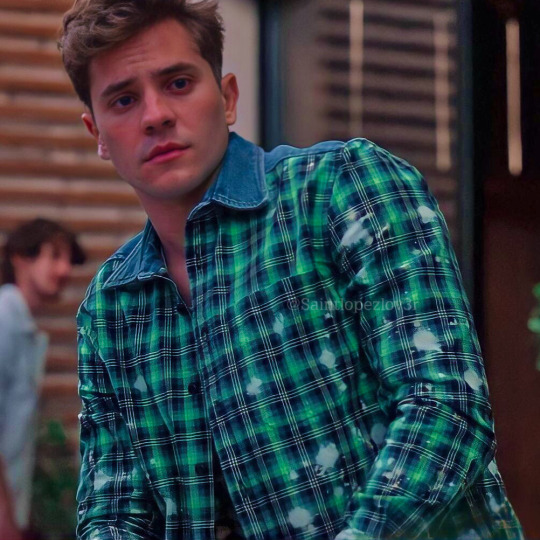

Iván Carvalho🇧🇷
Elite
27 notes
·
View notes
Photo






Ivan Carvalho Icons
like or reblog
#elite#ivan carvalho#andre lamoglia#elite icons#icons elite#ivan carvalho icons#icons ivan carvalho#andre lamoglia icons#icons andre lamoglia
33 notes
·
View notes
Photo








- What are you looking for?
- In a guy? That he loves me the way I deserve to be loved. The way I'd love him back. I wanna feel like I'm his priority and make him feel he's mine. I wanna give it my all. What do you look for in a girl?
- What you and I have. A connection. Being able to talk about anything or nothing at all. Serenity. Intimacy.
Patrick x Iván in Elite - Season 5
#elite#eliteedit#lgbtedit#manu rios#andré lamoglia#patrick blanco#ivan carvalho#elite netflix#patrick x ivan#mine#you can say what you want about this show#it is ICONIC to me
4K notes
·
View notes
Photo



meniName: Ivan Zarina
Age:26
Place Of Origin: Lūza, Latvia
Occupation: None
Orientation: Gay
Species: European Werewolf
Descriptive Traits:
Human: About 5ft 7, pretty average sized, he isn’t really skinny but isn’t chubby either. Definetly has a bit of a beer belly starting. His dirty blonde hair is usually buzzcut short and he’ll hide it under a touque that Austin knit for him. He has steel blue eyes that have been known to freeze people in place. His face is very narrow with sharp cheek bones. His smile could literally poison rivers. It’s very mischevious and taunting. Usually he wears a lot of sweaters that are pastel colours and chinos of the khaki and olive green variety. An instagram influencer would appreciate his style. He once tried to convince Tori to buy him a fanny pack so he could wear it across his chest and Tori just shook her head. Austin was very supportive of the Idea
Werewolf: Ivan has a very beautiful deep gray and white mixed coat. He is probably the quickest out of the pack. Being a European wolf he has deep golden irises when he shifts. He is the size of any other European wolf. Actually him and Nore are the same height.
Family: Mother: Fuorina Zarina (Werewolf, Deceased)
Father: Janis Zarina (Werewolf, Deceased)
Siblings: Edgar Zarina (Brother, deceased), Matais Zarina (Brother, deceased) Kristine Zarina (Sister, deceased)
Pack: Austin Djembole (Werewolf, Mate, Deceased), Tori Laclaire (Pack leader [No not the alpha, who the fuck goes by that Ivan? this isn’t 14th centruy Germany ffs] 24, Werewolf) Shaya Carvalho (Jurupari Sage, Age Unknown)
Personality: If it were a different time, Ivan for sure would be a pastel e-boy. He likes his grungy punk music and his trap beats in a club. But where Ivan seems like he is a boisterous, loud mouth that isn’t afraid to be sarcastic, deep down this boy is depressed af. Ivan Zarina is bogged down by a traumatic experience that led to his family getting killed by the Berlin pack. Someone framed his family for giving information to hunters that resulted in the Berlin alpha’s mate getting killed. The Zarinas were completely innocent, but because the Latvian packs are very close knit with hunters and have been known to work with them to keep rogue werewolves under control, they were blamed. Ivan was able to escape because he was and still is a slippery motherfucker. He tries not to let the overwhelming dark shadows slip out but there are days where Tori knows when to just let Ivan run off and get fucked up. He’s got a good sense of humour and is basically the pack’s class clown. Funny how it’s the most broken ones that make people laugh.
Languages: English, Latvian, Russian, German
Likes: Pink, Getting lost, Noah (the little shit keeps him busy), saturday morning cartoons and sugary cereal (this has become a sort of ritual for Noah and Ivan), The sounds of rivers, k-pop, rap, Pelmeni, Russian Cat memes.
Dislikes: The Berlin, Hunters, onions, smoking, homophobic shit bags
Vices: Partying
Fears: Being Alone
Quote: The World is ruthless. Thank any god that I am not the world.
Song: Coyote - Mako
Thank you Picrew for the lovely icons -> Picrew.me
And for @sangled, @lullindo and @Makowwka for their icon maker! Ty!
#Werewolf#Werewolves#Latvian werewolf#Ivan Zarina#The Spear#Gay Werewolf#Austin Djembole was his mate#and those two idiots were so fucking sweet they gave me cavities#don't worry Ivan#I'm sorry I took Austin#but you'll get a new bae#I swear#Ivan and Owen vibe a lot with each other#there's actually a scene where Ivan and Owen just sit next to each other#and they just sit there in the silence with a river rushing by at their feet#they pass a bottle of scotch back and forth#they don't say a single fucking thing but they understand
5 notes
·
View notes
Photo




Name: Tori Laclaire
Age: 24
Place Of Origin: Baton Rouge, Louisiana, USA
Occupation: Primary Guardian to Noah Laclaire
Orientation: Lesbian
Species: Werewolf
Descriptive Traits:
Human: Tori is about 5ft 10 and built like a shit brick house. She has wide shoulders, muscular forearms, and a thick torso. This girl will grapple you and put you into the ground and give you a concussion while doing it. If Tori Laclaire was in Rugby she would be a tighthead prop. Her scrumhalf and her wingers would love having her be the frontline of a scrum because she would not fucking move. Get me a freak like that. She has emerald green eyes that will look you up and down to evaluate the potential threat you pose. She has a scarred eyebrow from a training tussel she got into with Ivan. Her blonde hair is shaved on the sides while the top is about jaw length, she will tie it up behind her to keep it out of her eyes. Tori is usually seen wearing Austin’s (A recently deceased pack member) green bomber jacket that he cherished very much, a plaid shirt or a t-shirt underneath it. Usually she wears clothes that she can find at cheap department stores since she has been on the run for almost a year now.
Wolf: Tori’s wolf is pitch black save for a few patches of white on the tip of her tail, her chest and a bit around her nose. She also has sprigs of white fur around her stomach. Her biological mother was a North American werewolf who was half Native American so her emerald green eyes shift to silver around the irises when she is wolf. If we continue with the 6ft person scale, Tori’s head would be at the top of their midriff/ bottom of the chest and her shoulders would be at stomach height.
Family:
Mother: Allegra Drupot (Biological Mother, Altona, Manitoba, Canada, Werewolf, 93), Catia Carvalho (Step-Mother, Bao Vista, Brazil, Jurupari Sage, Deceased)
Father: Pastor Royce Laclaire (Baton Rouge, Louisiana, USA, Pastor, Human, Deceased)
Siblings: Noah Laclaire (8, sage, half-brother),Tori actually has two other sisters that she has no contact with. The oldest, Heather (38), tried to make contact but Catia intercepted the letter and burned it. The middle sister, Loral (29) couldn’t give a shit about Tori.
Pack: Ivan Zarina (Werewolf, 26), Austin Djembole (Werewolf, Deceased), Shaya Carvalho (Step-Aunt, Unknown Age, Jurupari Sage)
Personality: Tori is tired. This girl has taken responsibility to parent her half-brother. She is very rational and will think through every problem with every scenario in mind. Every decision she makes is with her brother and pack in mind before thinking about herself. She is a bit of a control freak and likes to handle things her way. Catia raised Tori to be the family protector once she found out what Tori was. With most purebred werewolves they will show early rage and strength issues around their teens with spikes of mood swings hitting the full moon. So to prepare Tori for a life in the supernatrual world, Catia taught Tori many skills regarding living on the road, surviving in the wild, keeping her cool under pressure and learning who your enemies are. It would be a true statement that Tori is definetly the mom friend of the pack. She keeps in charge of the finances, when and where to eat, when and where to sleep, and when and where they need to run. But she isn’t afraid to have a little fun, she just doesn’t have the time or energy to be a young wolf. She has people that rely on her.
Languages: English, Latin, Spanish, Portugese, French, Latvian
Likes: Sleep, the colour green, actual sweet tea (Fucking hedonists, how could you fuck that up?), loves a good run on a full moon, A decent gas station sandwich, hot showers, spongebob (Noah’s favourite cartoon right now), Driving North Carolina in the fall, Warm flannel freshy laundered.
Dislikes: Cold, Hunters, fake ‘sweet tea’, a bad gas station sandwich, Ivan teaching Noah how to swear in Latvian, when Shaya is being a bitch
Vices: Breaking things. When Tori needs to let off steam she will buy a whole set of plates and go smash them somewhere.
Fears: Her brother getting hurt/killed/homeless
Quote: As tired, ragged and beaten as I am. I will protect you with my dying breath and love you til the end of time.
Song: Never Far Away- Jack White
Thank you Picrew for the lovely icons -> Picrew.me
And for @sangled, @lullindo and @Makowwka for their icon maker! Ty!
#Werewolf#wlw Werewolves#werewolves#wolves#Tori Laclaire#the very tired girl that just wants to spoon her baby brother and take a long fucking nap#The Spear#Ocs#original character#picrew#Give this girl a place to sleep safely again#She spends a lot of her nights just thinking her next moves#info tidbit time#Tori has never been intimate with someone#hell she never had a crush before#and Lana Durand changes that#like holy shit#Tori knew girls were hot af#but Lana#eyes emoji#she needs to center herself every time she gets near or talks to Lana because she has a moment everytime where she is just gay af#When Lana kisses her#oh gurl
0 notes
Text
Patrick & Iván





like or reblog if you use or save.
#serie tv#elite#elite icons#elite 6#ivan carvalho icons#ivan carvalho#patrick blanco icons#patrick blanco commerford#patrick blanco#manu rios icons#manu rios#Patrick y Iván
76 notes
·
View notes
Text
Catuai & Yellow Bourbon: Exploring Brazil’s Coffee Varieties
Brazil dominates the coffee industry. It’s responsible for roughly a third of the coffee we drink. One single state in Brazil, Minas Gerais, produces more coffee than any other country in the world. It’s also the world’s biggest consumer of coffee.
And this coffee giant is also strongly associated with certain coffee varieties, some of which are rarely found in other origins. Its genetic research has also influenced the development of varieties in other countries.
From the high-yielding Mundo Novo to the sweet and delicious Pacamara, Brazil has played a pivotal role in the development of several cultivars. Let’s explore how this happened and some of the country’s most important varieties.
You might also like: 5 Things You Should Know About Brazilian Specialty Coffee
Natural processed coffee drying at a farm in the South of Minas Gerais, Brazil. Credit: Ivan Laranjeira Petrich
Why Are Coffee Varieties Important?
There is now a vast array of coffee varieties to choose from. But, what are they? Why are they important?
Coffee is a food, and as with all foods, there are different varieties. For example, when you go to the supermarket to pick up some apples, you might find Granny Smith, Pink Lady, or maybe Golden Delicious. They’re all apples, but each variety differs from taste to texture and will grow in different ways.
Coffee varieties are important for a number of different reasons. As a consumer, varieties will produce different cup profiles. If a roastery is after a high-quality, floral coffee, they may opt for a Geisha. If they’re after a coffee with high acidity, they may choose a Catuai. Years of development in coffee varieties mean that there are now a lot of options to choose from, and therefore a lot of different cup profiles too.
For coffee producers, picking coffee varieties is integral to farm management and can determine the success of a harvest. Firstly, varieties will produce different quality coffee in varying levels of yield, which can directly affect the income of a farmer. Secondly, varieties will flourish in certain environments, so it’s important to coffee production that producers select the best crop for their farm. Varieties also have different susceptibility to pests and diseases, which will play an important role in selecting a coffee variety, especially as these issues can devastate harvests.
The development of these varieties has provided a wider range of options for both producers and consumers, which for both parties, has very helpful benefits.
Overview of Fazenda Pedra Preta in Minas Gerais, Brazil. Credit: Fazenda Pedra Preta.
Origins of The First Brazilian Coffee Varieties
Coffee is not a native plant to Brazil. The first recorded history of Arabica in Brazil dates back to 1727 when Francisco M. Palheta was believed to have brought plants and seeds to the north of Brazil from neighboring French Guiana.
This was the Typica variety, now known for its low productivity and susceptibility to pests and diseases. Despite this, the genetics of this variety is the basis of most Arabica coffee cultivars around the world today. Typica is also still widely cultivated in countries such as Peru, the Dominican Republic, and Jamaica.
The coffee landed in 1727, and there would be a long wait until any kind of genetic improvement could be made to the Typica variety in Brazil.
The creation of the Agronomic Institute of Campinas (IAC) in 1874 was the first step in the development of Brazilian coffee varieties, founded to support the research of coffee crops. In 1928, following significant development in genetics research in the late 19th and early 20th Century, the genetics department was created at the IAC. This team included pioneers of coffee plant study, Carlos A. Krug and Alcides de Carvalho, who were responsible for many new coffee variety cultivations in Brazil and worldwide.
You might also like: Geisha, Bourbon, & More: How to Identify 6 Coffee Varieties
A cupping table at a farm in the Mountains of Espirito Santo, Brazil. Credit: Ivan Laranjeira Petrich
Formation of The Brazilian Genetic Bank
The next step in coffee variety development came in 1932. Professor C. A Krug from the IAC was sent to Cornell University in the USA to specialize in genetics, cytogenetics, and improvements of plants. That same year, he returned to the IAC and set up the genetic bank, with a focus on the preservation, genetics, and breeding of different plants and species, including coffee.
The first collections at the genetic bank were variations or mutations of Arabica found in Brazilian territory. Over the coming decades, the bank received more coffee type samples. These included plants and species collected by the agronomist Edmundo N. de Andrade during his trip to Indonesia and a coffee collection from the 1964‒65 Food and Agriculture Organization (FAO) expedition to Ethiopia.
The genetic bank is an incredibly valuable resource and its wide range of plants and species is a fundamental resource for the development of new coffee varieties which are more adapted to future conditions and consumption trends.
View from a coffee farm in the South of Minas Gerais, Brazil. Credit: Ivan Laranjeira Petrich
Different Arabica Varieties Developed in Brazil
Brazil has led the development of a long list of coffee varieties. We’ll focus on some of the most iconic varieties that you might have seen around.
Maragogipe
The Maragogipe variety was discovered in the city of Maragogipe, Bahia, in 1870, and developed as a result of a natural mutation of the Typica variety.
It’s distinguishable by its large fruits, as well as its high quality. This attracted the attention of coffee buyers in Rio de Janeiro and Europe. And in 1883, the Ministry of Agriculture purchased 500 kg of seeds and donated them and farming materials to Brazilian farmers. Despite this, its popularity didn’t last due to its low productivity, which proved a problem on commodity farms.
Although the variety is no longer as relevant in Brazil as it used to be, it played an important role in the development of the Pacamara variety in 1958 by the Salvadoran Institute of Coffee Research (ISIC).
Coffee trees at a farm in Brazil. Credit: Quintas de Guimarães
Yellow Bourbon
Sweet, delicate-bodied, and complex, Yellow Bourbon has a lot to offer. This variety can be traced back to Pederneiras, São Paulo in 1930. There are two theories behind the origin of Yellow Bourbon. The first is that the variety had come from the natural breeding of Botucatu’s Yellow and Red Bourbon, and the second that the plant could be a natural mutation of Red Bourbon.
It was one of the first to be recognized for its outstanding cup, in addition to having significantly higher production than other varieties. It quickly became popular in Brazil, with production tripling from 1949 to 1951. However, there was a decline in Yellow Bourbon in the years that followed. This was due to more productive and less susceptible coffee varieties being released at that time.
In recent years, the demand for specialty coffee has brought complex, high-quality coffee into fashion. In 2005, the IAC picked up studies of Yellow Bourbon again, with research into strains with higher yields. In the 2017 Cup of Excellence Brazil, samples of Yellow Bourbon were cupped at 92.33 and sold for US $126.00/lb at auction, 100 times the C price on that date.
Ripe yellow cherries and unripe cherries at a farm in Minas Gerais, Brazil. Credit: Nicholas Yamada
Caturra
This variety has bright acidity and is commonly grown throughout Colombia, Costa Rica, and Nicaragua. It’s believed to have been discovered on a plantation in Lessa, a village in Minas Gerais between 1915 and 1918. Research suggests that Caturra is a natural mutation of the Bourbon variety.
The IAC started making selections of Caturra in 1937. What made Caturra an interesting variety and caught the attention of researchers was its small size, which is called dwarfism. This explains the name Caturra, which means “small” in the indigenous language Guarani.
Small plants are often seen as an advantage; they allow farmers to increase the number of plants in the same space, compared to larger plants. Because of this, it has been used in the development of other coffee varieties as well as playing a role in the high-density coffee cultivation.
Mundo Novo
A sweet cup with low acidity, this coffee variety is still widely grown in Brazil. The name Mundo Novo translates to “New World” in Portuguese.
The history of Mundo Novo can be traced back to 1896 when Typica seeds from Indonesia were planted in Jaú, São Paulo. It is a result of natural breeding between the Typica variety and Bourbon variety found in Jaú, and is characterized by its large plant size. It wasn’t until 1943 when the IAC was informed of a plantation near Mundo Novo, present-day Urupês, that had both good yields with low susceptibility to pests and diseases. They discovered that the plants had grown from seeds that were collected from a single tree on the edge of a narrow road in the city of Mineiros do Tietê.
After years of studying and breeding, Mundo Novo was released in 1952. Even today, it is still recognized for its high yields and good cup quality. Although not resistant to pests and diseases, this variety is still widely cultivated in Brazil due to its high production.
Catuai
This hybrid variety makes a sweet cup with bright acidity. Its name comes from the indigenous language of Guarani translating to “very good.”
Its origins can be traced back to 1948 when the IAC began developing a high-yield variety. The Catuai group is a result of artificial breeding of Caturra, for its short qualities, and Mundo Novo, for its high yields. It benefits from a smaller size, meaning more plants can be sown in the same space, and high productivity.
After years of research, the Red and Yellow Catuai group varieties were released in 1972. Due to their productivity and good cup quality, they became extremely popular. Catuai remains popular in Brazil, as well as being grown in countries such as Honduras, Costa Rica, Guatemala, Hawaii, Cuba, and many others.
Researching Rust-Resistant Varieties
Coffee leaf rust is a parasitic fungus that infects coffee plants, capable of destroying entire harvests. In the late 19th Century, it wiped out coffee plants in Sri Lanka, putting an end to its coffee industry. More recently, between 2012 and 2014, it caused over US $1billion of damage in Central America.
Before leaf rust reached Brazil in the 1970s, Alcides de Carvalho had already begun studies into coffee leaf rust resistance. Using hybridization techniques, he performed one of the first examples of artificial breeding of Robusta, known for its resistance, and Arabica. Although Carvalho was working on the development of this variety in the late 1960s, it wasn’t officially released until 1992, when it was named Icatu.
Icatu is now known to be highly productive and to have low susceptibility to pests and diseases, leading it to be commonly cultivated in Brazil. The name comes from the indigenous Tupi-Guarani language, which translates to “bonanza.”
The Timor Hybrid variety was discovered in the 1920s on the island of Timor in Southeast Asia. It was the result of the natural breeding between a Robusta plant and an Arabica plant, resulting in a natural resistance to coffee leaf rust, which is not found in other naturally occurring Arabicas.
Since then, many Brazilian research institutions have used the Timor Hybrid variety to develop more pest and disease-resistant varieties. This includes IAC 125 RN which has a resistance to coffee rust and roundworms, and Siriema AS1, a variety resistant to leaf rust and mining leaf bug.
Coffee leaves infected with coffee leaf rust at a farm in Brazil. Credit: Nossa Familia Coffee
Brazil has a substantial influence on the coffee industry. This is not solely due to its vast production of coffee but as a prominent figure in the development of coffee varieties which are much loved by consumers and valuable to farmers.
Its dedication to genetics and the development of coffee varieties is admirable. Without it, we wouldn’t have the high-scoring Yellow Bourbon, the highly productive Caturra, and many more.
Enjoyed this? Check out The Arara Variety: What Is It & Why Is It Popular in Brazil?
Written by Jonas Leme Ferraresso. Featured photo caption: Coffee plantation in the South of Minas Gerais, Brazil. Featured photo credit: Ivan Laranjeira Petrich
Perfect Daily Grind
Want to read more articles like this? Sign up for our newsletter!
The post Catuai & Yellow Bourbon: Exploring Brazil’s Coffee Varieties appeared first on Perfect Daily Grind.
Catuai & Yellow Bourbon: Exploring Brazil’s Coffee Varieties published first on https://espressoexpertweb.weebly.com/
0 notes
Text








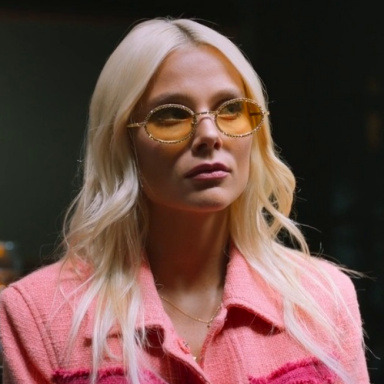
like or reblog if you save. ♡
#icons#icons request#elite#netflix elite#elite season 7#elite s7#elite icons#valentina zenere#isadora artinan#anitta#mirela balic#nadia al saidi#andre lamoglia#ivan carvalho#netflix#elite spoilers
33 notes
·
View notes
Photo



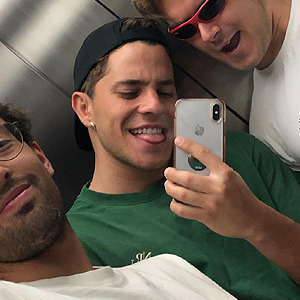
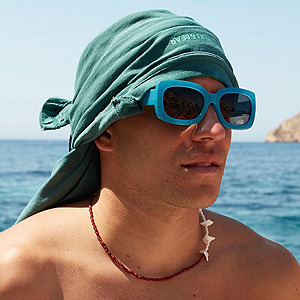
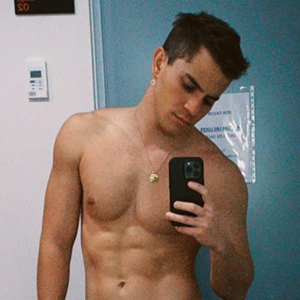



like/reblog if you save
#andre lamoglia#icons andre lamoglia#andre lamoglia icons#elite#icons elite#elite 5#icons elite 5#ivan carvalho#ivan#icons ivan carvalho#icons ivan#elite5#elite season 5#netflix#icons netflix#male#icons male#male models#models#icons boys
381 notes
·
View notes
Text









# 𝘇𝗭𝘇 新的 🍇° ꕤᩨᩝ ぷ⋕ . . 𝕟̫𝖾̈𝗐͢ ᖘᩚ𝗼ᩚ̲𝘀𝕥̫. ★ // ( ˘ ³˘)♥︎ ★ ∘៳ 🕸️🐛 l!ke 𖦹r rebl𖦹g #? ᨓ .. . 𓍢📢 ֶָ֪﹪. [ ℭ ]𝗿𝗲𝗱¡𝘁𝚂 𝗆𝕖 :: ✩* .💉 ⋆
#cybercolors#bwbejacksonpsd#celebrities#icons with psd#soft icons#pastel moodboard#moodboard#colorful moodboard#trufflezitas#messy layouts#susumo#elite#elite icons#elite s6#icons elite#rocio elite#ivan carvalho#patrick blanco#nico elite#isadora artinan#isadora artiñán#didac elite#mencia blanco#cruz carvalho#elite metadinhas#elite matching icons#isadora artinan icons#mencia blanco icons#patrick blanco icons#elite netflix
66 notes
·
View notes